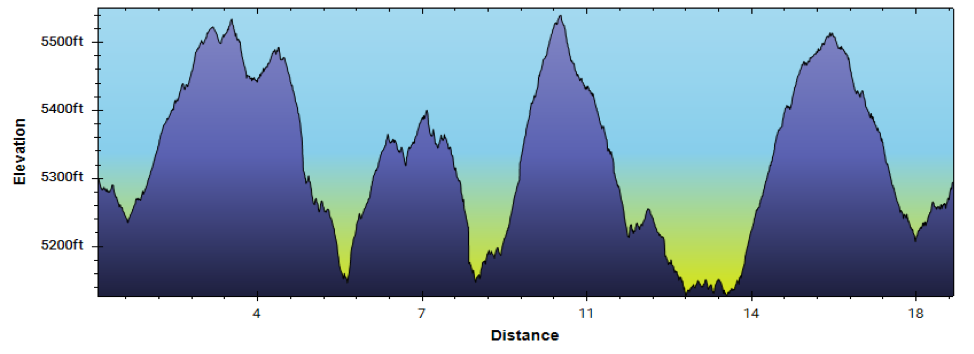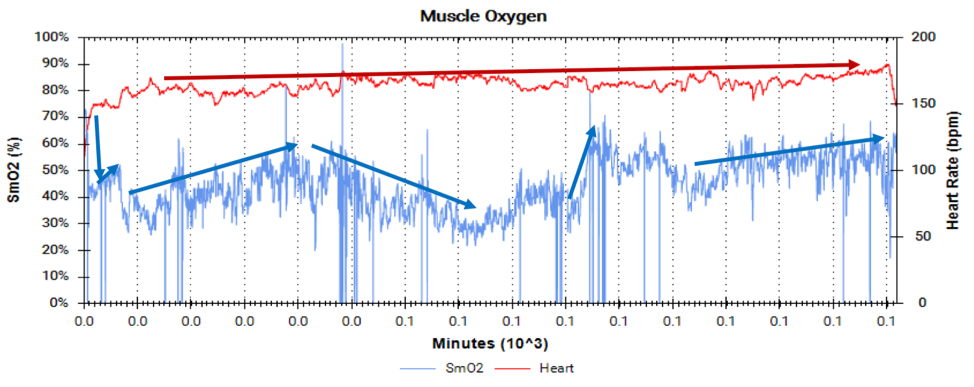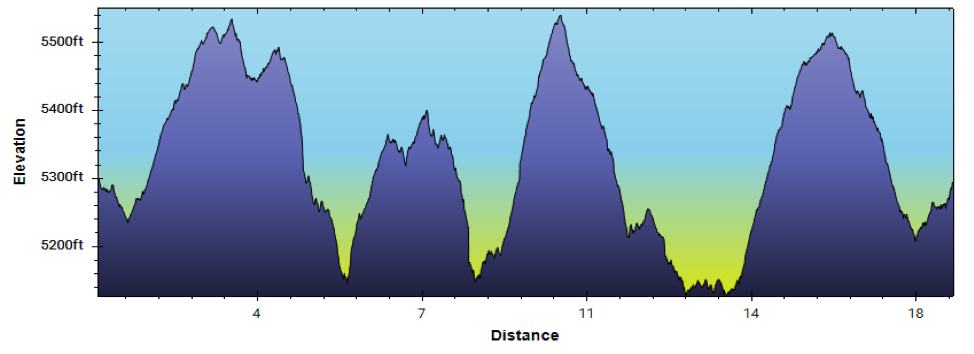Case Study: Behind the Rocks Muscle Oxygenation Analysis
In the last blog post, I detailed my adventure through the back country of Utah, in the Behind the Rocks 30k. I explained the training leading up to the race, as well as the race itself, which left me begging for mercy with bilateral hamstring cramps 3 miles from the finish line. During the race, I was wearing a heart rate monitor, and Moxy monitor while also tracking speed, elevation, and running dynamics. In this post I want to explore the biometric data that was collected throughout the race to see if there were any indicators that cramps or decreases in performance were immanent.

To begin, the Behind the Rocks 30k involved 2000+ ft of elevation gain and is illustrated in Figure 2, below. From the elevation trace its evident that this course undulated during the entirety of the race, with the last climb being one of the largest and steepest. Overall, this race had some very challenging spots and the combination of very steep uphills and downhills took their toll on my body.

Physiologically, let’s look at how my body was responding to the race in real time, with measures of heart rate and muscle oxygenation. Figure 3 shows both of these traces with the red trace being the heart rate, and the blue being the muscle oxygenation (SmO2) values from my right vastus lateralis. Overall, the heart rate progressively increased throughout the race, with an average of around 165 bpm which is pretty typical for a well-paced race.

The SmO2 trace fluctuated a lot more. At the very beginning of the race my SmO2 was around 70% indicating that I was properly warmed up and ready to go. Upon starting, SmO2 dropped very drastically to around 40% where it slowly started to creep back up to around 60% over the first 2 miles. The first 2 miles were downhill and I tried to relax and coast which resulted in an increase in SmO2 as my heart rate increased and vasodilation in the legs muscles also increased. At the 2 mile mark the race started to go uphill, so we see another sharp drop in SmO2 to deal with the increased resistance of going uphill.
Over the next 2 miles SmO2 increased, again indicating vasodilation and better oxygen delivery to the working muscles. Around the 6 mile mark, SmO2 begin to drop again indicating that I was working progressively harder, requiring more oxygen to be consumed. Around the 12th mile I began to feel the beginnings of cramps forming in both of my hamstrings, at the same time there was a sharp rise in SmO2, which could indicate one of two things.
- At this point in the race, since my hamstrings felt like they were going to cramp I did slow down, reducing intensity, thus allowing for SmO2 to rise due to a lower oxygen requirement.
- And/Or the recruitment of my vastus lateralis started to decline, thereby reducing the amount of oxygen that was being consumed in that particular muscle.
While both of these are plausible explanations, I should note that number two is speculation which could only be proven if I were also wearing EMG to monitor the amount of muscle activity in each muscle of the leg. From that steep rise, SmO2 seems to be unable to decrease any further than about 50% for the remainder of the race which indicates that my legs have reached a level of fatigue that can no longer drive oxygenation of the legs down without slowing or stopping for an extended period of time.
Through sheer willpower I was able to complete the race, but after the onset of cramping the first time, I had to drastically change my gate in order to prevent any other cramps from occurring. The change in gate could also play to a lack of deoxygenation within the thigh muscle.
While speculation exists as to why cramping occurred during this particular race, I hope that it is evident that simply monitoring heart rate, which only increased during the race, does not provide valuable insights into how muscles are potentially fatiguing during a race. Moxy provides a local measure of oxygenation that can be useful in dictating race strategy by different oxygenation patterns seen throughout the race.

